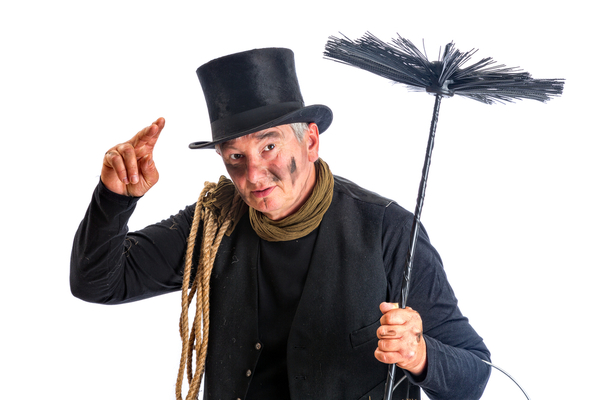Nothing says home like a wood-burning fireplace. Gas-powered and gel fireplaces have their strong points, especially when it comes to ease of use. But only a real wood-burning fireplace, with its deep crackle and glowing orange embers, is capable of sparking such a sense of place in the imagination of homeowners. Yet realism comes at a price. A chimney that reluctantly draws smoke can lead to a sooty, smelly home interior. And a poorly maintained chimney can also lead to a terrifying phenomenon known as a chimney fire.
In many cases, the cause is a dirty chimney. Learning how and when to clean your chimney can help improve indoor air quality and prevent devastating chimney fires. “Built-up soot in your chimney can increase your risk of a chimney fire, and a clogged chimney can also increase the presence of carbon monoxide in your home by not allowing it to escape when you have a fire burning in the fireplace,” says Lindsey Pasieka of ConsumerSafety.org.
Here’s the reason: wood fires do not burn cleanly. When wood burns, it releases a host of contaminants that coat the inside of the chimney. Creosote, an oily, black substance, is one byproduct of wood-burning fires. Creosote forms as a result of gases that have not fully combusted, and it condenses on the inside of the chimney and remains until removed. Burning green or unseasoned wood hastens creosote build-up.
Also, organic, flammable debris can enter the chimney, brought by the elements or by animals. Wind can deposit leaves and twigs in chimneys lacking flue caps. Birds and vermin can nest in chimneys or otherwise bring unwanted materials.
Chimney fires begin with snaps and pops as loud as gunshots, progressing to a deep, rumbling sound. Oily, black, flaming creosote rains down into the firebox. When the fire starts, it starts like an explosion. Flames blast out of the top of the chimney and back down into the firebox. Due to thermal expansion, the flue may crack at some unreachable mid-point and shoot flames into the walls from the inside. Chimney fires typically cannot be controlled by the homeowner. Because firefighters have to shoot water from the top downward, the house suffers damage from flooding. In many cases, the entire house is lost.
Chimneys should be cleaned no later than the early fall, before fire burning season. If you choose to hire a chimney sweep, you can expect a quick turnaround if you have them come earlier, ideally in the summer. For self-cleaning, late summer is the best time, since you can count on a dry, safe roof and mild conditions.
In addition to scheduled chimney cleanings, you should clean if you are someone who:
- Allows soot and creosote tend to fall into the firebox during a fire
- Notice honeycomb textured creosote building up on the inside of the chimney
- Notice the creosote is more than 1/4-inch thick
- Burns a lot of artificial logs
- Is a heavy fireplace user
- Burns a lot of green or otherwise unseasoned firewood
Now, while you could attempt to clean the chimney yourself, why? No really, it’s dirty, it’s messy, and face it, you don’t really know what you’re doing. By the time you buy all the tools, and take all that time out of your busy schedule, you could have had it all done by a pro at a comparable cost.
—
Photo Credit: Anneka / Shutterstock.com
